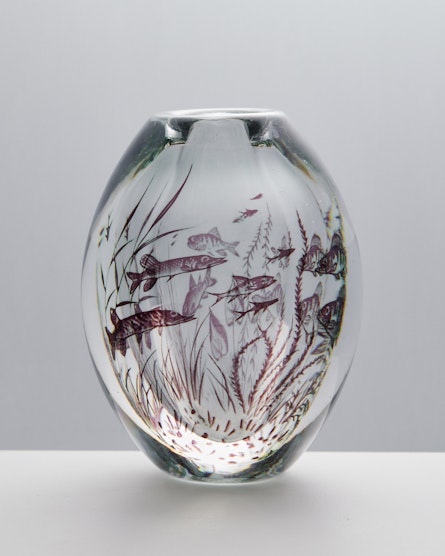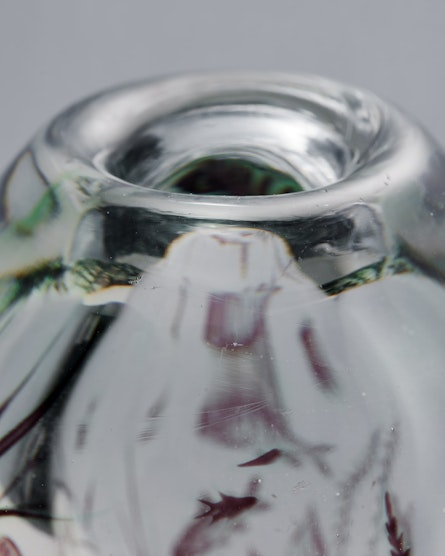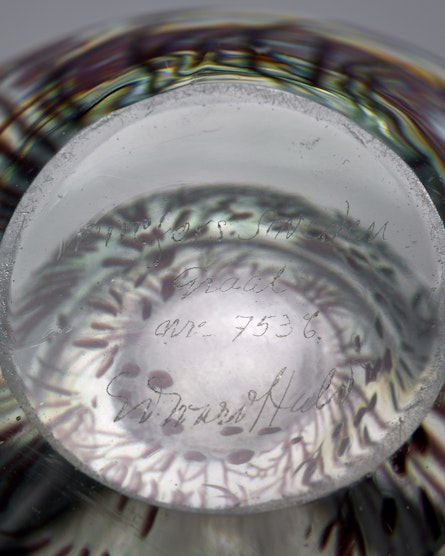Vase 'Fish Graal'Designed by Edward HaldSweden, 1949
Reference number: 7627
Tear sheet: Download
Material:
Glass.
Measurements:
H: 16 cm / 6 1/4''
Diameter: 12 cm / 4 3/4''
Description:
Edward Hald (1883 – 1980) is one of the well-known Swedish glass artists who have worked for Orrefors. After studying in Leipzig, he completed his artistic training with Henri Matisse in Paris. The famous Graal glass is one of the first masterpieces of Edward Hald, which he developed together with Simon Gate and Knut Bergqvist. In the 1920s, his work coined the term 'Swedish grace', the Swedish variant of Art Deco. The celestial globe that Edward Hald created for the 1930 Stockholm World's Fair is seen as the pinnacle of his career. During the Second World War he led the management of Orrefors, which forced him to perform a balancing act between economics and art.
The Graal glass technique was invented at Orrefors Glasbruk in Sweden, in 1916. In simple terms, the glassmakers create a piece with different coloured layers of glass, allow it to cool, then cut a design in one of the coloured layers to create a pattern. Then they re-heat it and case it with more crystal, and expand it. Obviously, this is a very complex, time-consuming process. The more complex the process, the more likely are errors and the more likely is the creation of pieces which can't be sold, even though hours of time have been invested in them.
A variation of the Graal technique is Fishgraal, invented by Edvard Hald in the 1930s. A design is painted on the glass, a green layer in this case, with liquid bitumen. Then, all the green layer which isn't covered with the pattern is acid-etched away, so that the pattern stands out on a clear background. Then it is reheated to 400-500 degrees Celcius and carefully covered with another thick layer of crystal. The name, Fishgraal, comes from the fact that the first collection featured fish. The designs are more detailed and the piece is not expanded, as they are in other forms of graal, so the designs are not distorted.
Signed.




